Abstract
Thirty-six persons -- veterinarians, technicians and students at a veterinary clinic -- were unwittingly exposed to a rabid dog over a period of 21/2 days. One veterinarian received a penetrating bite, two other individuals were grabbed by the dog but the skin was not penetrated, and many were exposed to saliva or urine or both. In addition, the owner of the dog and his wife and three children, while not bitten, were exposed to saliva. The diagnosis was made post mortem when specimens of the dog's brain were examined by indirect fluorescent antibody testing. All but one of the students had been vaccinated against rabies with hamster kidney vaccine, but eight members of the veterinary college's staff had not been so vaccinated. Treatment started with duck embryo vaccine; if necessary, rabies (human) immune globulin was also given. When one student reacted severely to the first dose of duck embryo vaccine permission was sought to bring a human diploid vaccine into Canada. In five patients the human diploid vaccine was substituted for the duck embryo vaccine because of severe reactions to the latter. Twenty-five staff members and the family of five received both vaccines. Reactions to the human diploid vaccine were minor and transient. Recommendations include the early licensing of the human diploid vaccine in Canada.
Full text
PDF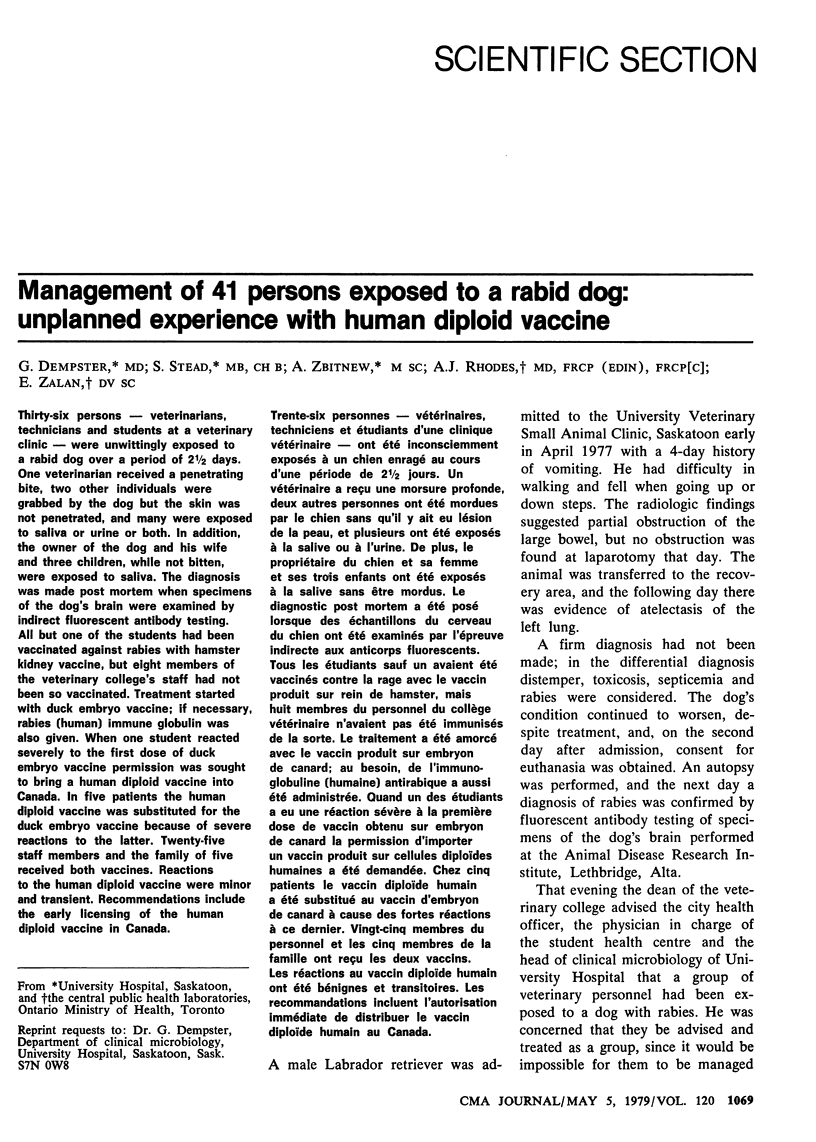
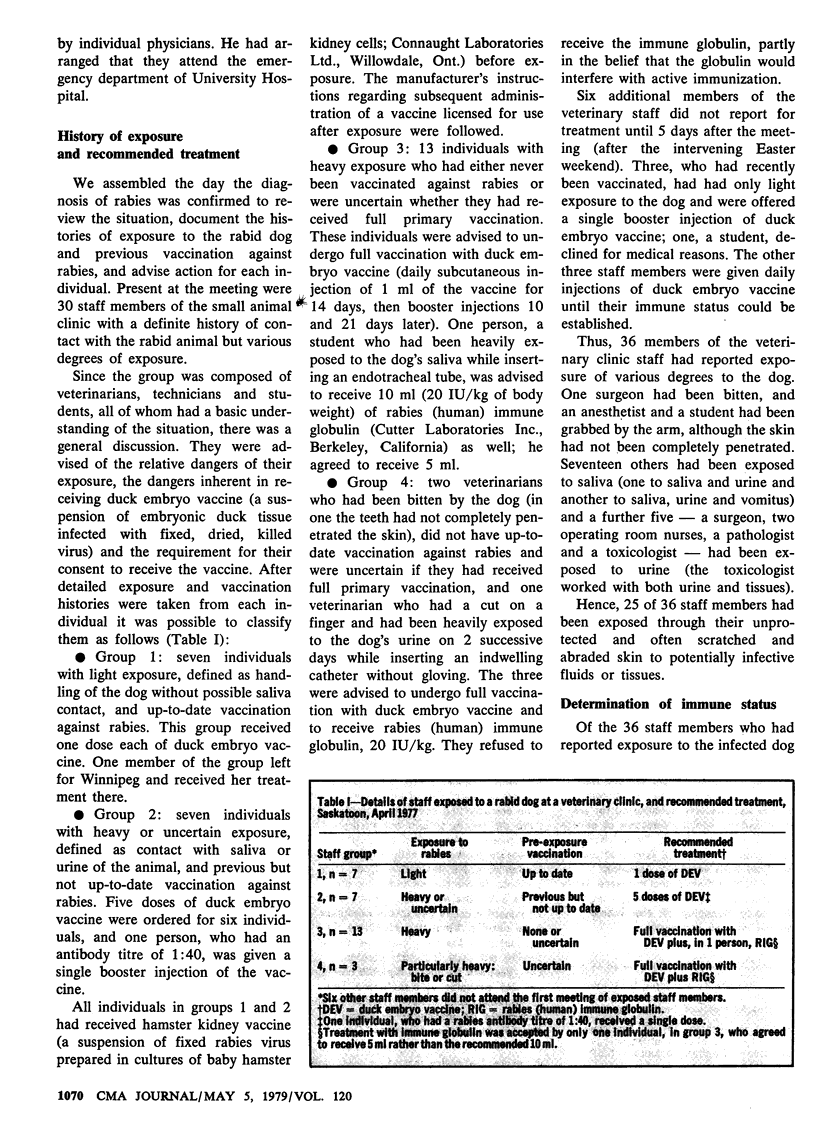
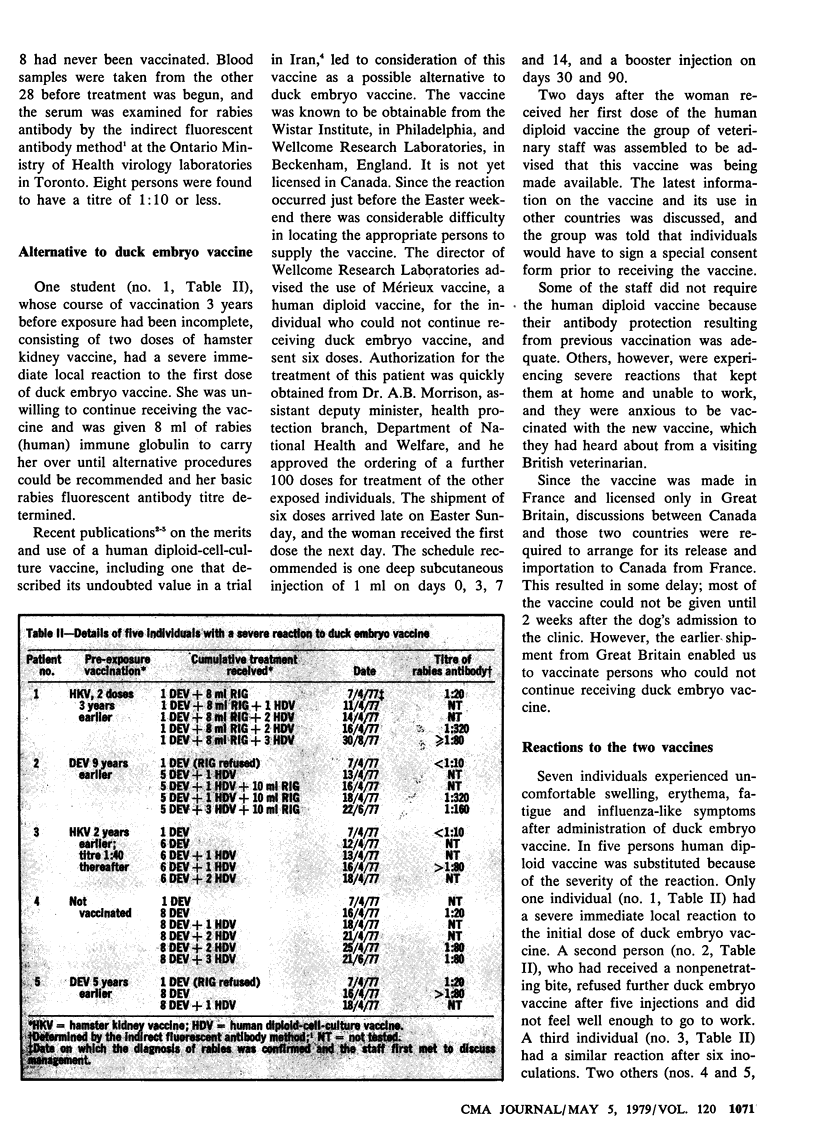
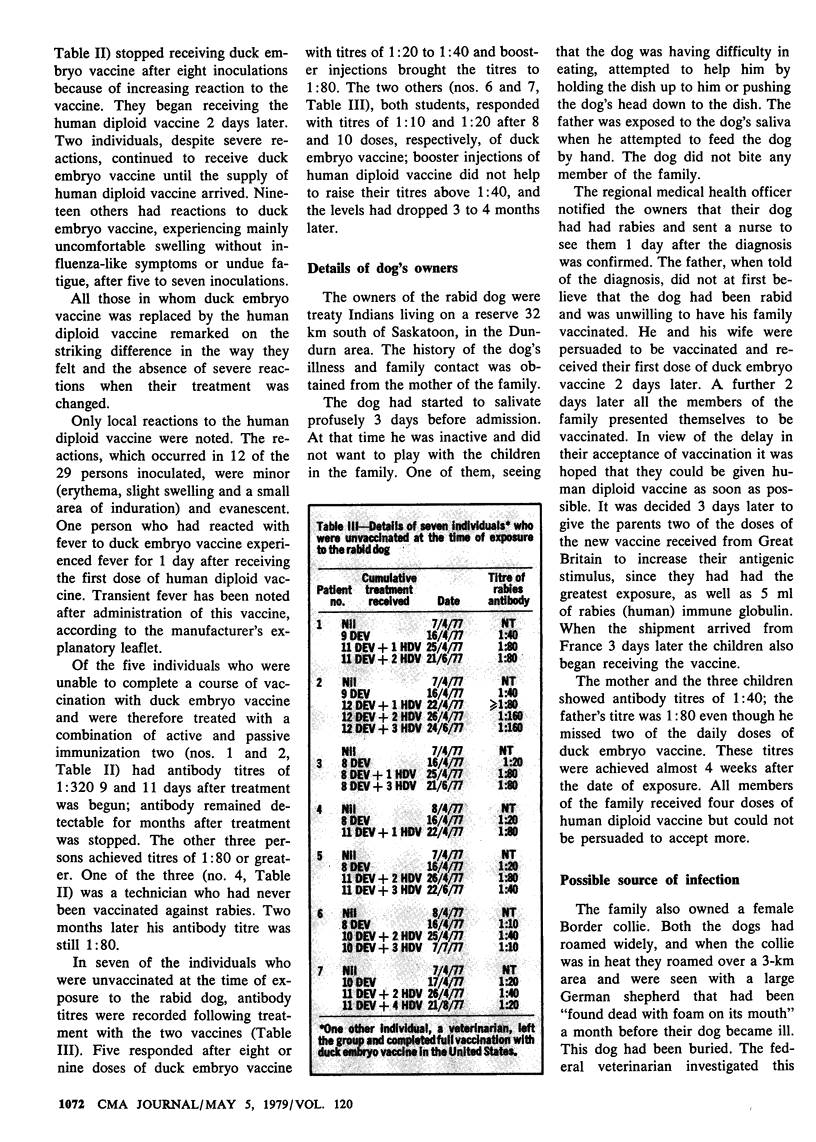
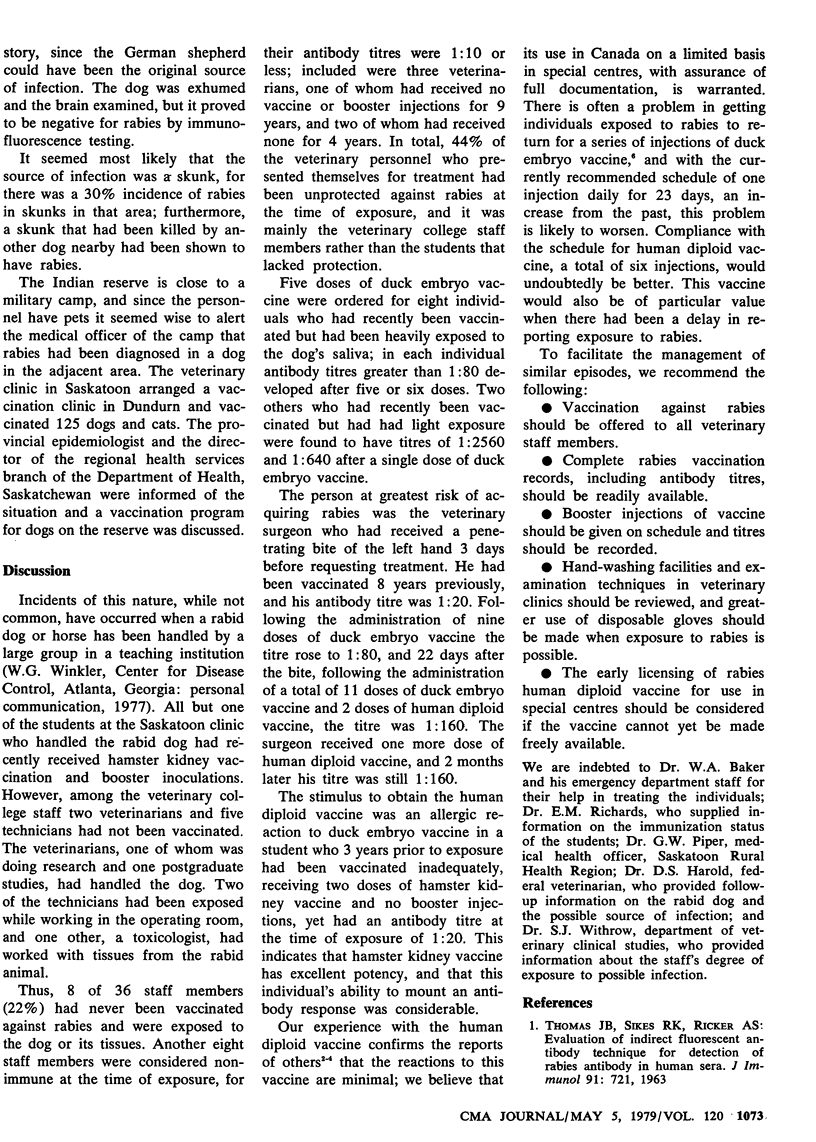
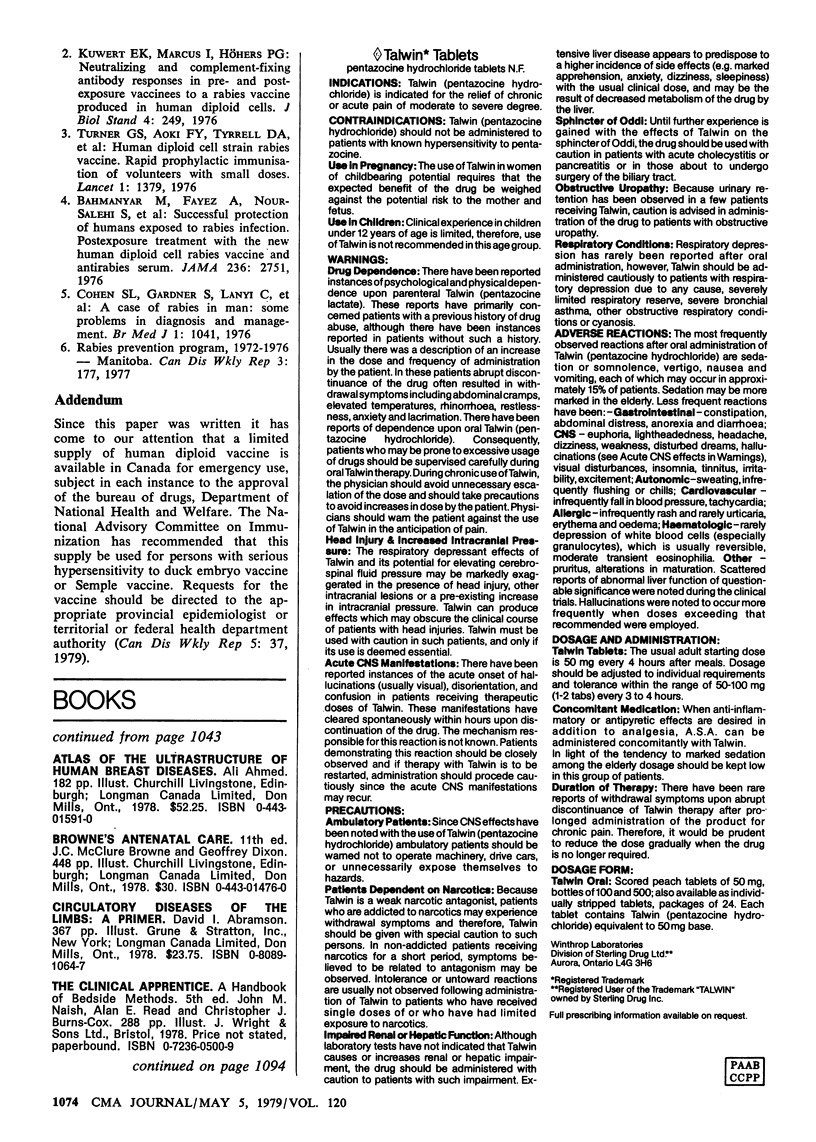
Selected References
These references are in PubMed. This may not be the complete list of references from this article.
- Bahmanyar M., Fayaz A., Nour-Salehi S., Mohammadi M., Koprowski H. Successful protection of humans exposed to rabies infection. Postexposure treatment with the new human diploid cell rabies vaccine and antirabies serum. JAMA. 1976 Dec 13;236(24):2751–2754. [PubMed] [Google Scholar]
- Cohen S. L., Gardner S., Lanyi C., McDonald J. R., Rée H., Southorn P. A., Woodruff A. W. A case of rabies in man: some problems in diagnosis and management. Br Med J. 1976 May 1;1(6017):1041–1042. doi: 10.1136/bmj.1.6017.1041. [DOI] [PMC free article] [PubMed] [Google Scholar]
- Kuwert E. K., Marcus I., Höher P. G. Neutralizing and complement-fixing antibody responses in pre- and post-exposure vaccinees to a rabies vaccine produced in human diploid cells. J Biol Stand. 1976;4(4):249–262. doi: 10.1016/s0092-1157(76)80010-8. [DOI] [PubMed] [Google Scholar]
- THOMAS J. B., SIKES R. K., RICKER A. S. EVALUATION OF INDIRECT FLUORESCENT ANTIBODY TECHNIQUE FOR DETECTION OF RABIES ANTIBODY IN HUMAN SERA. J Immunol. 1963 Dec;91:721–723. [PubMed] [Google Scholar]
- Turner G. S., Aoki F. Y., Nicholson K. G., Tyrrell D. A., Hill L. E. Human diploid cell strain rabies vaccine. Rapid prophylactic immunisation of volunteers with small doses. Lancet. 1976 Jun 26;1(7974):1379–1381. doi: 10.1016/s0140-6736(76)93028-2. [DOI] [PubMed] [Google Scholar]


